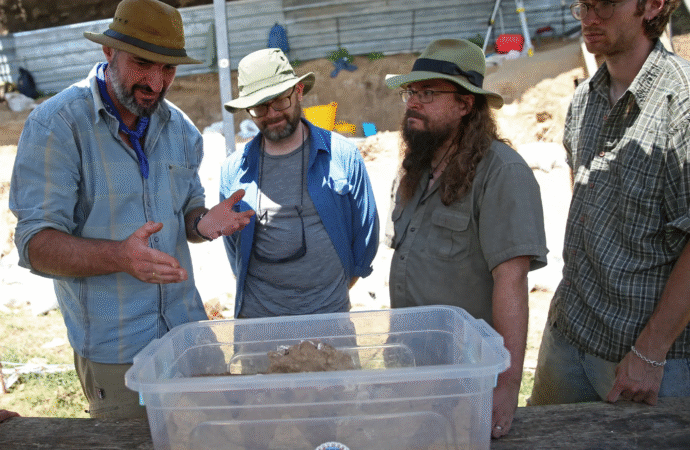A 1.8 million-year-old human jawbone has been unearthed at the Orozmoni site, roughly 62 miles southwest of the Georgian capital of Tbilisi.
A jaw-dropping discovery.
A 1.8 million-year-old human jawbone has been unearthed in the hills of Georgia — and scientists say the fossil could offer major clues into some of the earliest prehistoric human settlements in Eurasia.
The ancient mandible was uncovered by archaeologists at the Orozmoni site, located roughly 62 miles southwest of the Georgian capital of Tbilisi, in a prehistoric gold mine smaller than two parking spaces.
Experts believe the bone may be one of the oldest remains of early humans excavated outside of Africa, offering clues to the patterns of Homo erectus, a hunter-gatherer species that scientists believe began migrating roughly two million years ago.

“The study of the early human and fossil animal remains from Orozmani will allow us to determine the lifestyle of the first colonizers of Eurasia,” said Giorgi Bidzinashvili, a professor of stone age archaeology at Ilia State University in Tbilisi.
“We think Orozmani can give us big information about humankind.”
The discovery of the lower jawbone follows a similarly impactful find of an early human tooth around the same area in 2022. In the nearby village of Dmanisi, 1.8-million-year-old human skulls have previously been found.
The latest dig didn’t just turn up human remains.
Archaeologists also uncovered fossils from sabre-toothed tigers, elephants, wolves, deer, and even giraffes, alongside a trove of stone tools.

The jawbone, along with the animal fossils, could unearth secrets about the diets, climate, habits, and the evolution of early humans as they migrated across the Eurasian continent, the scientists said.
At the Orozmani excavation site, archaeologists discover new remains of Homo erectus every year.
“My second day (on the dig) I found a nice little ankle bone,” said Miles Alexandre, a recent anthropology graduate from the University of Rhode Island in the US.

























Leave a Comment
Your email address will not be published. Required fields are marked with *